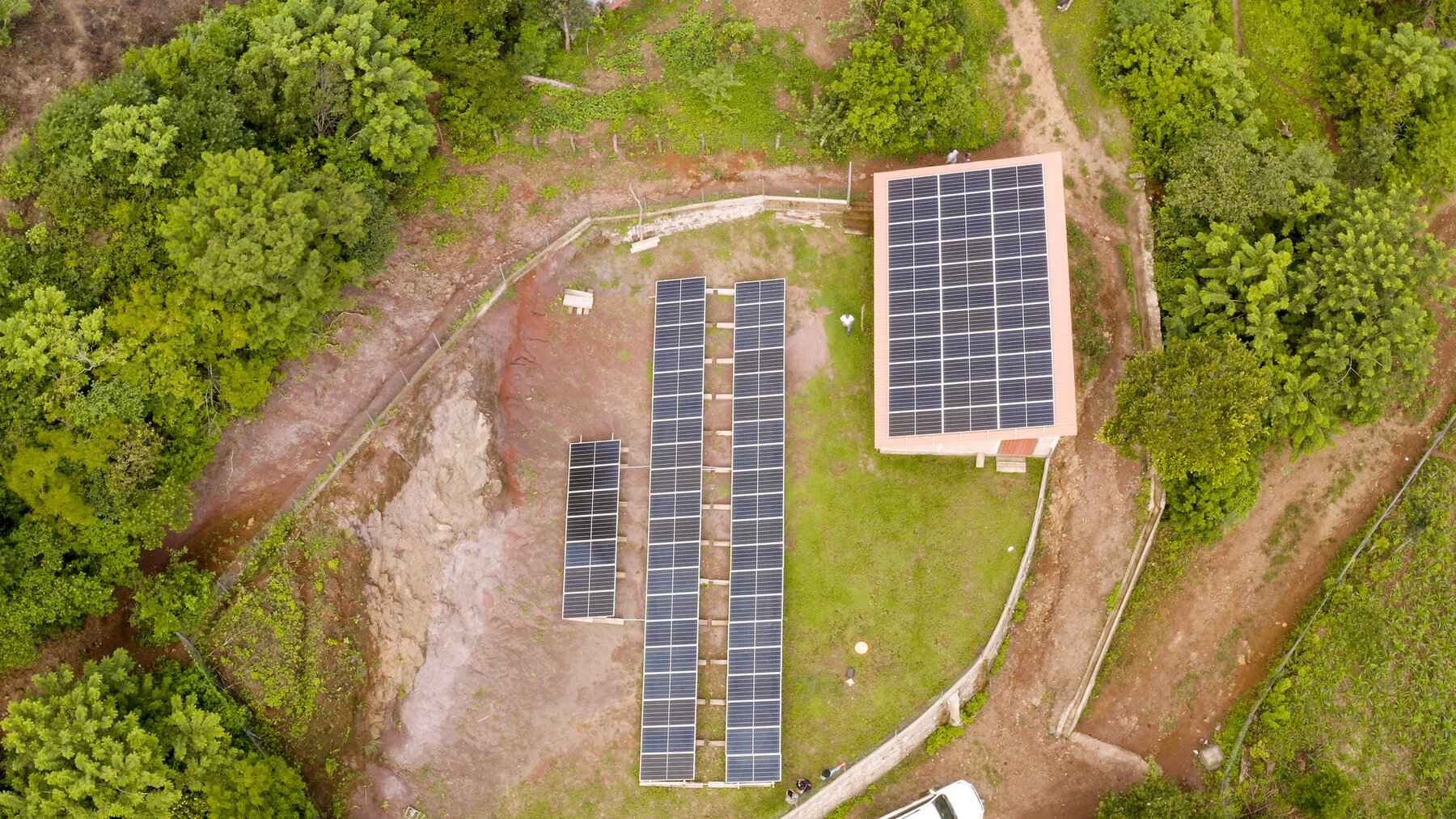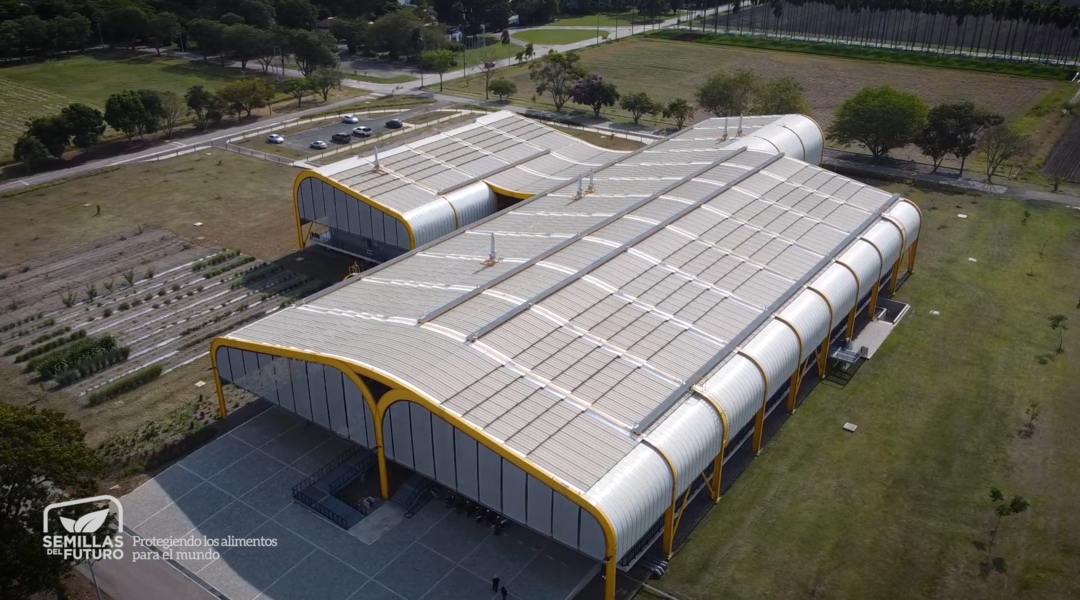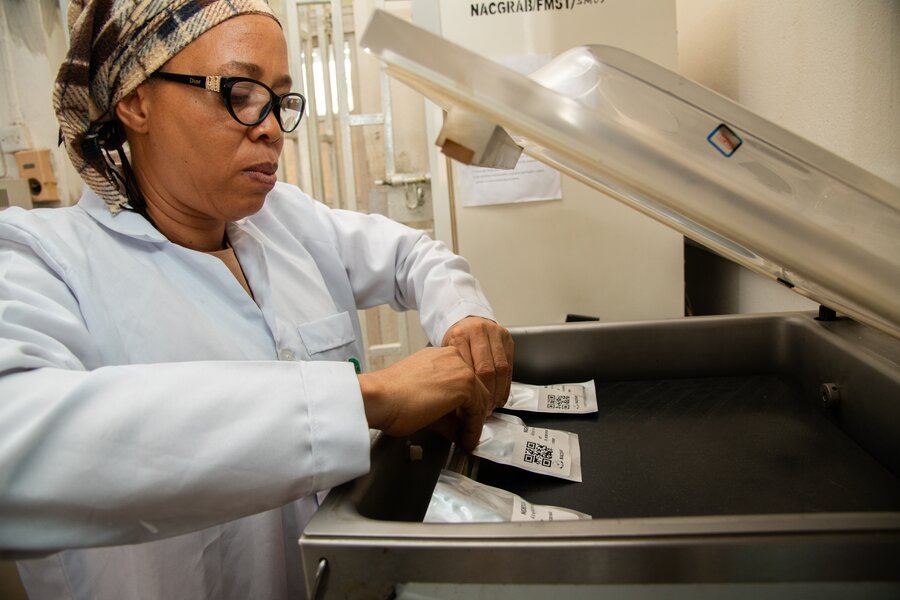29 April 2025
Genebanks are energy-intensive. Cold rooms or freezers must stay running to keep seeds at the -20°C recommended for long-term conservation. Scientific equipment, seed dryers and computers also operate around the clock. And, of course, scientists need the internet and lights to do their work. A stable power supply is not an optional luxury for those who keep our seeds safe, it’s essential to what they do.
But what may come as a surprise is that a very power-hungry part of a genebank’s work happens even before the seeds are packed away to slumber in cold rooms and freezers. Seeds must first be properly dried. This process can take weeks and must run uninterrupted to avoid compromising the seeds.
The world’s 900 or so genebank facilities rely on electricity to keep their collections viable. But few have embraced renewable energy – despite growing urgency to reduce emissions, cut costs and build resilience.
Some genebanks, however, are rethinking how they power their mission.
A Model From Colombia
At the Alliance of Bioversity International and CIAT in Colombia, for example, the Future Seeds genebank is redefining conservation. Opened in 2022, it now covers 40% of its energy needs with solar panels. This and other design elements have earned it recognition as the first genebank to achieve LEED Platinum certification for both design and operations.
“The vision for Future Seeds as a 'green genebank' emerged from our fundamental mission of sustainability and eco-efficiency,” said Joe Tohme, former Managing Director at the Alliance and one of the project’s visionaries. “Investing in renewable energy and sustainable design was a natural extension of our mission. We wanted to create a facility that demonstrates how conservation infrastructure can be both cutting-edge in its primary function and environmentally responsible in its operations.”
Designing For Resilience
Architects Guillermo Valencia and Alejandro Echeverri ran extensive simulations using local wind and lighting data. The building was deliberately oriented to minimize how hot it gets inside while maximizing natural light. “The beauty of Future Seeds’ design is how the passive and active systems complement each other,” said Tohme. “The corridors’ natural ventilation systems use prevailing winds to help stabilize temperatures. These passive elements, including the canopy, dramatically reduce our baseline energy requirements.”
These choices do more than reduce costs – they boost resilience in a warming, energy-insecure world. “Well-insulated cold rooms and the shaded outer ‘skin’ of the building dramatically reduce the energy required to maintain key storage temperatures,” said Janny van Beem, a genebank quality management expert at the Crop Trust. “Future Seeds demonstrates what’s possible when smart design meets clear purpose.”
Tohme adds: “What struck many during COP16, when we hosted delegations planning new genebanks, was that sustainability didn’t come at the cost of functionality. It enhanced it."
Future Seeds has helped shift the conversation from ‘Can we afford to build sustainably?’ to ‘Can we afford not to?’
Nigeria and Zambia Turn To The Sun
Yet for many genebanks – particularly in low- and middle-income countries – these kinds of investments remain largely out of reach. Solar infrastructure is costly to install, even if it pays off over time. In Nigeria and Zambia, where power cuts are frequent and electricity prices high, renewable energy isn't just a sustainability choice, it's a survival strategy.
In Nigeria, where blackouts cost the economy an estimated US$29 billion annually, the national genebank (NACGRAB) is preparing to install solar panels through the Germany-backed Seeds for Resilience project.
“Our goal is to meet about 70-80% of our energy needs with solar power, giving us a reliable supply for seed storage, germplasm conservation, and research. This will help us cut energy costs, lower our carbon footprint, and focus even more resources on protecting biodiversity and strengthening food security at home and around the world,” said Anthony Okere, Director of NACGRAB.
In Zambia, the genebank managed by the Zambia Agricultural Research Institute (ZARI) is facing similar challenges. In 2026, ZARI will become the first genebank part of Seeds for Resilience to be powered entirely by solar panels – an ambitious but savvy move in a country that experiences up to 275 sunny days per year.
Layers of Protection
But just meeting energy needs alone isn't enough. Experts emphasize the importance of redundant power systems – layered sources of electricity that ensure cold rooms and drying chambers remain functional even when the main power supply fails.
“You need the grid, you need solar, and yes, you still need diesel generators as a last resort,” said Nora Castañeda-Álvarez, coordinator of BOLDER, a component of the Crop Trust’s BOLD project that focuses on opportunity crops.
Castañeda-Álvarez noted that practices that improve energy efficiency also play a critical supporting role. Well-sealed cold rooms, low-energy freezers and environmentally friendly refrigerants can all reduce electricity demands. Multi-ply aluminium seed packets – designed to prevent moisture infiltration – also protect collections when power fluctuates.
Cryopreservation adds another layer of complexity, relying on steady supplies of liquid nitrogen to keep plant materials frozen at -196°C. “I think solar power for running liquid nitrogen generators should be a key part of the Global Plant Cryo Initiative – especially for genebanks in earthquake-prone areas, such as Peru. It would make cryo systems more resilient if the grid goes down, and it’s a smart step toward sustainability, too,” shared Dave Ellis, former genebank manager at the International Potato Center (CIP).
Leaning into Low-Tech Solutions
Beyond infrastructure, geography plays a role too. Genebanks in hot, humid places – such as Ghana – face uphill battles to control both temperature and humidity. In contrast, dry, high-altitude locations like the Andes offer naturally favorable conditions. Some institutions, like CIP, store safety duplicates in mountain cabins to benefit from cooler, drier air.
Even in less-than-ideal climates, though, low-tech innovations can help. The FAO Genebank Standards recommend contingency strategies, such as underground storage chambers that maintain lower temperatures year-round – an affordable, energy-saving option in some tropical regions.
“Fully solar-powered genebanks are not a reality yet,” said Castañeda-Álvarez. “The refrigeration systems we rely on just aren’t designed to run entirely on solar. But solar is a powerful part of the mix – especially if your systems are efficient. You can’t depend on a single energy source.”
Still, momentum is building. Powering conservation with clean energy is increasingly viewed as essential, rather than idealistic. “Future Seeds is serving as a blueprint for next-generation conservation facilities,” said Tohme. If we want our food systems to be resilient, the infrastructure that supports them must be as well.
*Banner image: solar panels on a farm in Nicaragua. Photo: IRENA





